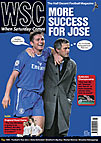 When Helen Duff went to Preston to see the wizards of the green baize in action, Ronnie O’Sullivan was nowhere to be seen – though nor was David Beckham
When Helen Duff went to Preston to see the wizards of the green baize in action, Ronnie O’Sullivan was nowhere to be seen – though nor was David Beckham
Saturday, March 26, saw die-hards gather in the north-west of England for some prestige, high-stakes football. At issue: a nation’s progress towards the World Cup. Meanwhile, over at Old Trafford, some kick-about was taking place between England and Northern Ireland – but, frankly, who cares?
At Preston’s National Football Museum, a more discerning crowd set their eyes on a smaller-scale contest: the English National Table Football Championship. By the time the sun went down, one player would emerge victorious – taking, as their prize, the honour of inclusion in England’s five-strong squad at this August’s Table Football World Cup in Belgium.
First, though, clarification. Table football, in this instance, is what you or I would call Subbuteo – the game played with plastic figures mounted on semi-spheres and fuelled by dextrous flicking. For most of us, of course, table football means something else entirely (the game played with plastic figures kebabed on metal skewers and fuelled by a drunken belief that spinning four spokes simultaneously constitutes strategic brilliance) but, for trademark reasons, those who play Subbuteo in organised competitions do so under an unsatisfactorily generic name.
Then again, the mere fact that there are organised competitions in existence will doubtless surprise quite a few – in particular those who’ve always considered Subbuteo a kids’ thing, and an outdated kids’ thing at that. With the average nine-year-old’s leisure time now divided equally between nuking things on their Nintendo and imbibing enough Sunny D to be fashionably obese, it’s perhaps odd the game’s still around at all, outside a few nostalgic toy cupboards.
Quietly, however, it’s thriving. The English championship has been an on-off event since the Sixties, there are 500 people playing the game competitively in the country, the World Cup runs annually, there’s a mini-FIFA to oversee the rules, associations exist as far afield as Australia, Nigeria and Pakistan, and there’s an established international pecking order (Belgium and Italy lead the field – though the latter team employs a coach, which looks a little try-hard).
What’s more, Subbuteo is once again being pitched at the pocket-money market: a new series of swanked-up sets have come out, boasting likenesses of Michael Owen, David Beckham et al in a poignant bid to imbue the rudimentary, clothes-peg-shaped players with dynamic celebrity glamour.
Who, then, is playing the game – and is it on the verge of a renaissance? The Preston tournament suggests it’s not just blokes in their thirties and forties who have retained a fondness for Subbuteo from their days flick-to-kicking across their parents’ shagpile.
Competitors at the National Football Museum ranged from pre-teen boys to greying veterans. Diverse in age, physique and gender (well OK, there was one woman competing among a couple of dozen males) they were unified by dedication to their surprisingly skilful pursuit. Because the game’s enacted with playthings, there’s a temptation to see it as childish – no more dignified or credible than, say, a Scalextric Grand Prix, or a My Little Pony Grand National. The seriousness of the participants is contagious, however. Games at the National Football Museum were played respectfully, almost reverently, and when debate arose about who last touched the ball, the competitors were sportingly eager to yield to their opponent – a “no, after you, I insist” mentality last seen in real football in about 1892.
This diligent politeness was observed throughout the day – although one man did yell “Yeeesss!” and “Get in!” at heart-stopping volume every time he scored. Against the hush of the other players, this felt as incongruous and shocking as if, in a library, some old dear had suddenly roared “Have that!” in response to locating a long-sought Miss Marple.
None the less, what emerged above all was the talent possessed by serious table footballers. One waggish young spectator may have sarcastically requested a “David Beckham free-kick” – thus drawing cruel attention to the stylistic limitations of a sport played with legs that don’t bend – but the accuracy of passing, startling variations of pace and the tactical nous needed to predict and pre-empt opponents all command respect.
England captain Phil Redman, who eventually triumphed on the day, achieves from the equation finger plus player plus ball a degree of swerve incompatible with all known laws of physics. Table football may not be cool, or even likely to become so, but it’s certainly impressive.
And besides, if you’re going to gain an international reputation for something you used to do with your brother on a rainy Sunday afternoon, it’s probably better that it’s Subbuteo than a competitive form of snot-flicking.
From WSC 219 May 2005. What was happening this month